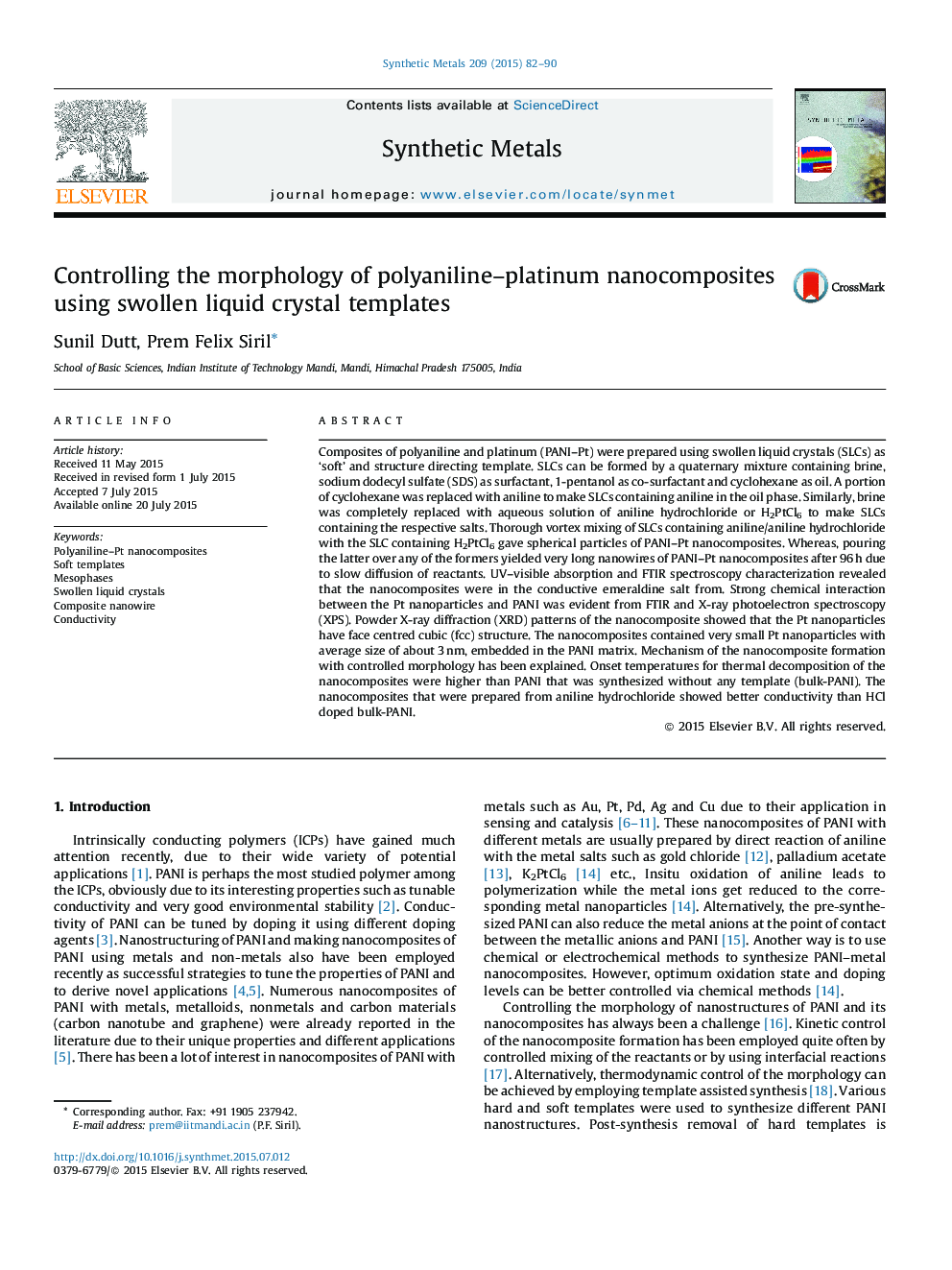| کد مقاله | کد نشریه | سال انتشار | مقاله انگلیسی | نسخه تمام متن |
|---|---|---|---|---|
| 1440476 | 1509368 | 2015 | 9 صفحه PDF | دانلود رایگان |
• Composite nanostructures of polyaniline–Pt were prepared.
• Swollen liquid crystals (SLCs) containing aniline/aniline hydrochloride were made.
• Vortex mixing of SLCs containing reactants resulted in spherical nanocomposite.
• Pouring one SLC over the other resulted in composite nanowires through diffusion.
• The nanocomposites contained Pt nanoparticles embedded in polyaniline matrix.
Composites of polyaniline and platinum (PANI–Pt) were prepared using swollen liquid crystals (SLCs) as ‘soft’ and structure directing template. SLCs can be formed by a quaternary mixture containing brine, sodium dodecyl sulfate (SDS) as surfactant, 1-pentanol as co-surfactant and cyclohexane as oil. A portion of cyclohexane was replaced with aniline to make SLCs containing aniline in the oil phase. Similarly, brine was completely replaced with aqueous solution of aniline hydrochloride or H2PtCl6 to make SLCs containing the respective salts. Thorough vortex mixing of SLCs containing aniline/aniline hydrochloride with the SLC containing H2PtCl6 gave spherical particles of PANI–Pt nanocomposites. Whereas, pouring the latter over any of the formers yielded very long nanowires of PANI–Pt nanocomposites after 96 h due to slow diffusion of reactants. UV–visible absorption and FTIR spectroscopy characterization revealed that the nanocomposites were in the conductive emeraldine salt from. Strong chemical interaction between the Pt nanoparticles and PANI was evident from FTIR and X-ray photoelectron spectroscopy (XPS). Powder X-ray diffraction (XRD) patterns of the nanocomposite showed that the Pt nanoparticles have face centred cubic (fcc) structure. The nanocomposites contained very small Pt nanoparticles with average size of about 3 nm, embedded in the PANI matrix. Mechanism of the nanocomposite formation with controlled morphology has been explained. Onset temperatures for thermal decomposition of the nanocomposites were higher than PANI that was synthesized without any template (bulk-PANI). The nanocomposites that were prepared from aniline hydrochloride showed better conductivity than HCl doped bulk-PANI.
Figure optionsDownload as PowerPoint slide
Journal: Synthetic Metals - Volume 209, November 2015, Pages 82–90
